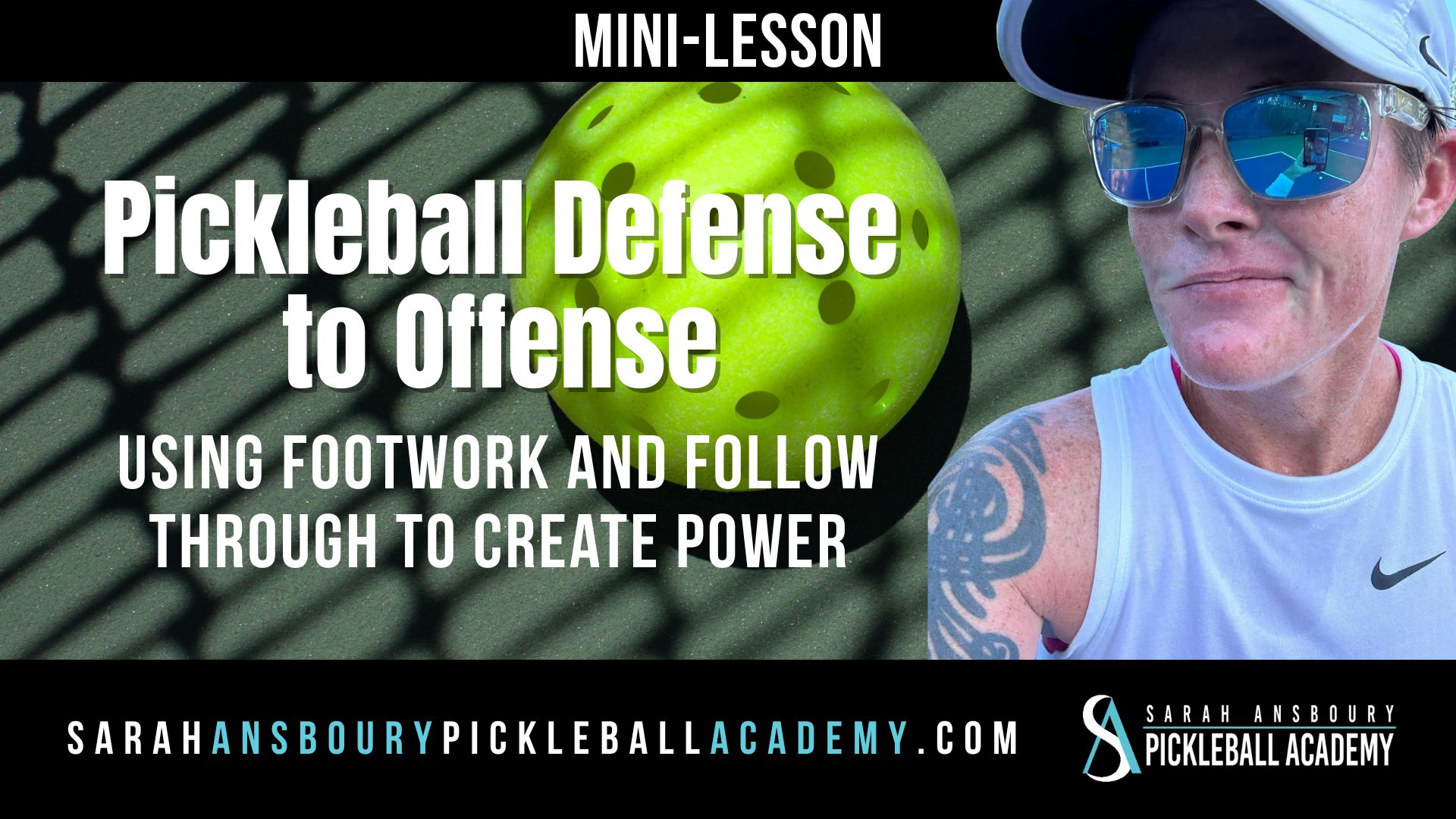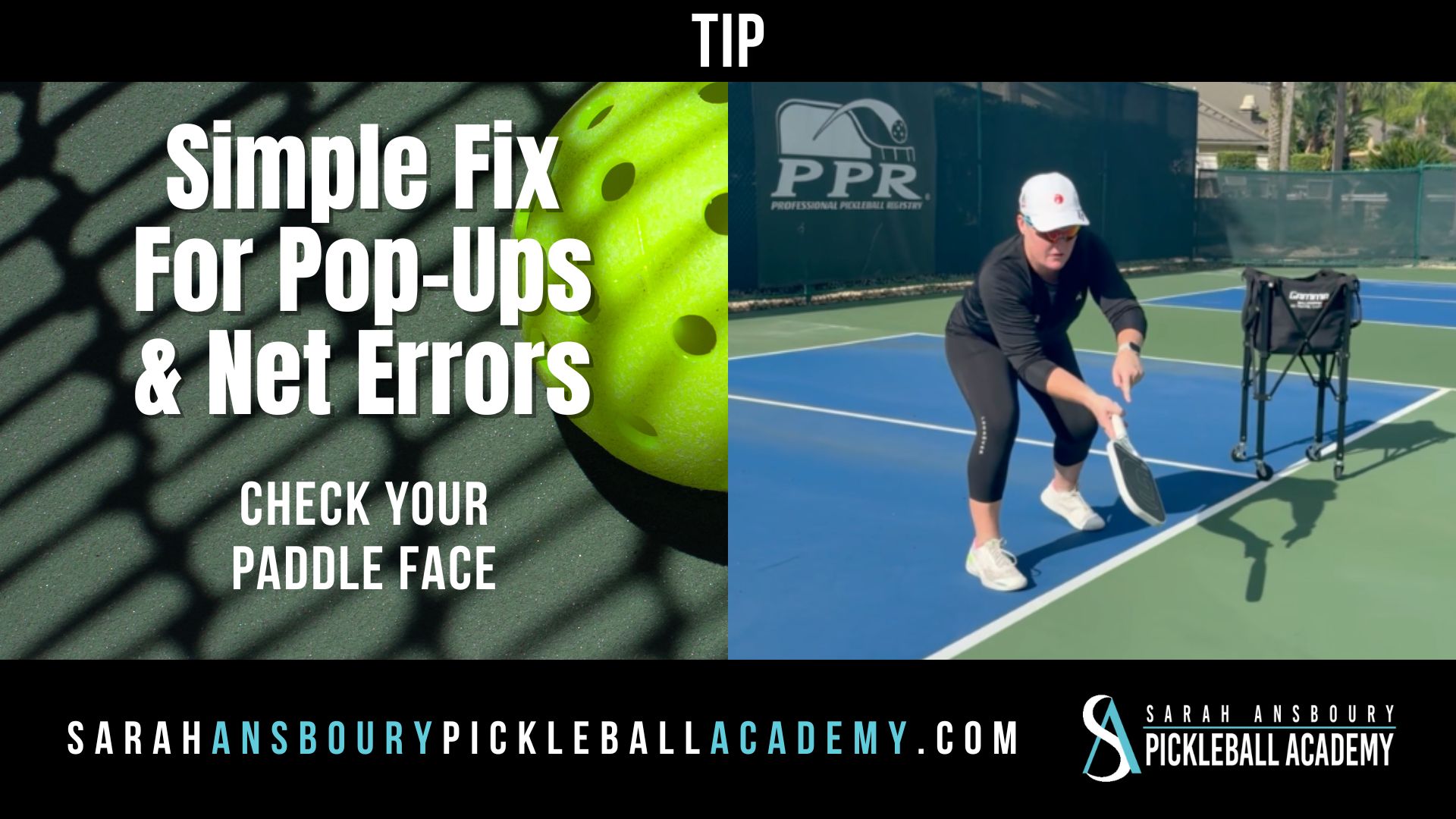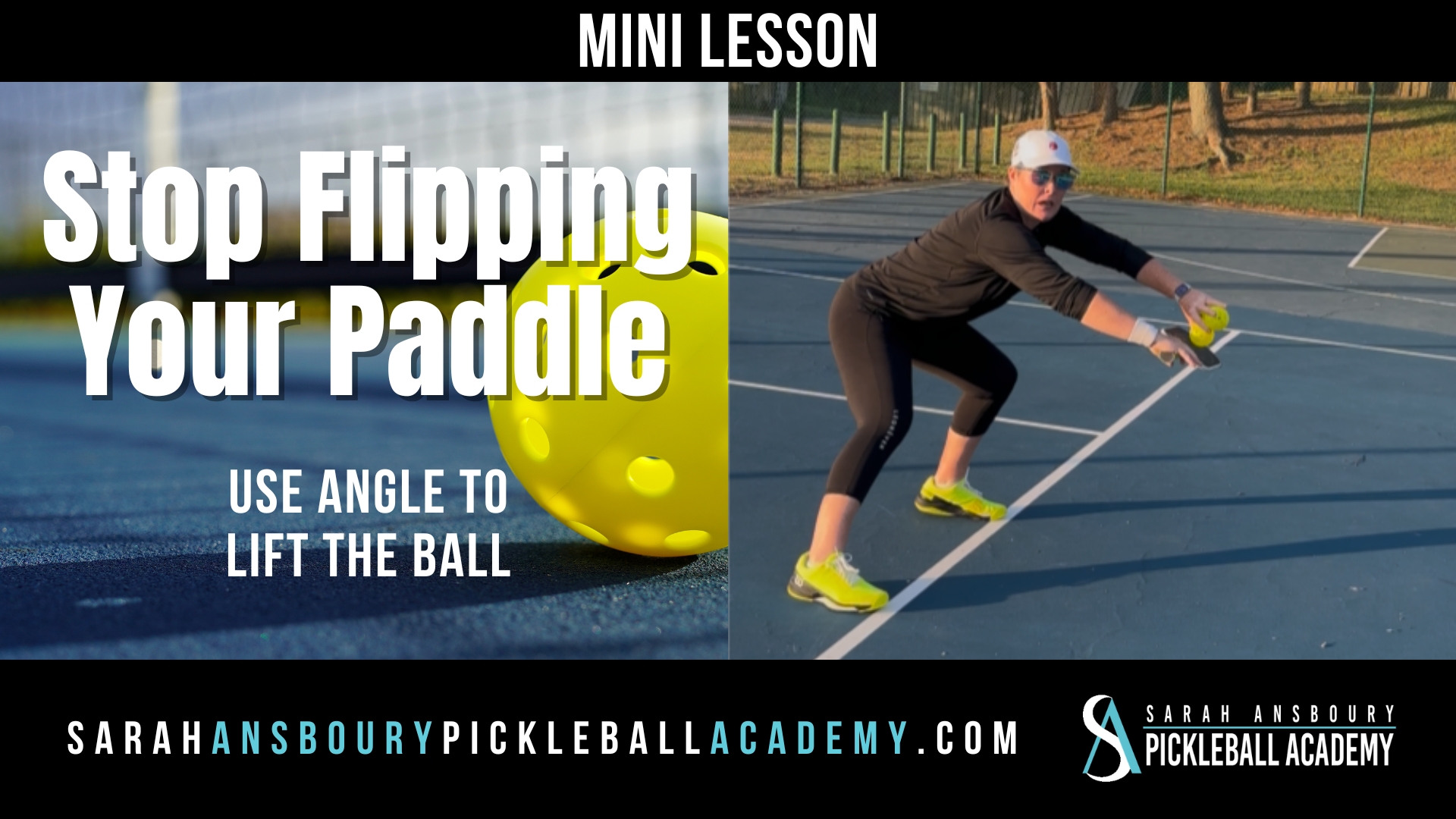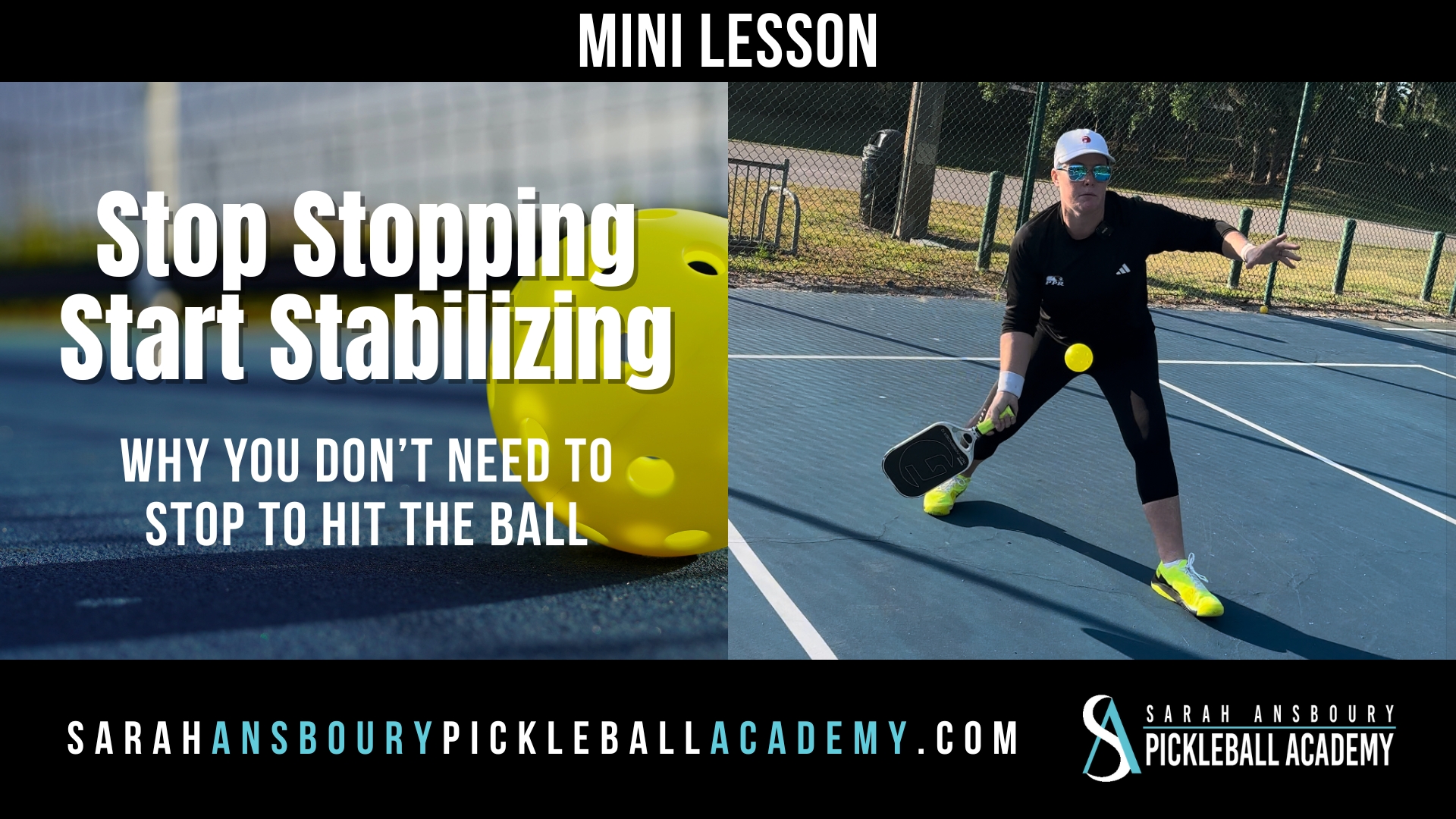One of the best things about pickleball is the two bounce rule. This rule neutralizes the advantage a server would typically enjoy by forcing the serving team to remain at the baseline, while the receiving team captures the line. So rather than rushing to the line mindlessly, I want you to think about an all-important pickleball strategy…keep them back!
Offense, Defense, and Pickleball Strategy
I’ve written before about the difference between being on offense, in a neutral position, or on defense. If you are not comfortable with these concepts, please take the time to read this post about defense and neutral offense. It is important to understand the differences because these positions have a direct effect on what pickleball strategy you will employ.
When you and your partner are at the line first, you are on offense. You are in control of the point and as such your job is to keep your opponent in a defensive position. You don’t want to help your opponent. You don’t want to neutralize your advantage. As such, you don’t want to invite them forward…rather you want to keep them back away from the net. Hitting a shorter ball, that allows your opponent to come forward helps them.
Practice Drill
When my opponent is near the baseline my thought is to push them back. I will literally think of taking my paddle and pushing them back onto their heels. Think about holding your paddle out after your shot …. push them back.
You can practice this with a ball machine or a partner. Place a marker (a cone, a towel or use chalk to mark the court) about 3 feet  inside the baseline. Then place two or three marks at one-foot intervals toward the net. Standing at the non-volley zone line, your task is to hit balls to those targets. As you practice, imagine catching the ball on your paddle and pushing toward your target. Often players rush through this shot, swinging too fast or too hard creating errors or mishit balls that fall short. Instead, take your time and focus on extending your paddle and holding it in place well after the ball has left the face of the paddle.
inside the baseline. Then place two or three marks at one-foot intervals toward the net. Standing at the non-volley zone line, your task is to hit balls to those targets. As you practice, imagine catching the ball on your paddle and pushing toward your target. Often players rush through this shot, swinging too fast or too hard creating errors or mishit balls that fall short. Instead, take your time and focus on extending your paddle and holding it in place well after the ball has left the face of the paddle.
Pickleball Strategy
Understanding and using pickleball strategy is just as important as learning the technique associated with pickleball shots.
Communication: Having A Pickleball Strategy When You Walk On The Court
Too often we walk on the court and we play points without a plan. We barely talk to one another. Of course, when we are competing in a tournament, having a pickleball strategy is even more important. Even if we have never faced these opponents before, and have no idea of how they play, we need to be on the same page with our partner. And before we can create a strategy for specific opponents, we need to have clear expectations with our partner.
I think people struggle with strategy and communication because their sole concern is getting the ball over the net. They lack confidence that the ball will go to the intended target or that they might hit the ball too high. But consider these things:
- If I commit to a target before the shot, it is more likely the ball will go there.
- If I verbalize that commitment to my partner, it is even more likely the ball will go there.
- If I tell my partner I am going to hit the third shot drop crosscourt, and I accidentally pop it too high it is not the worse thing in the world.
By communicating my intent, my partner and I have moved into position to retrieve the likely return. This at the very least puts us in position. But more importantly, I have a goal and my partner knows that. We are clear on our intent. None of us can get the ball to where we want, the way we want, 100% of the time. But we can make a plan and communicate that plan 100% of the time. And the more we do that, the more likely we are to actually let that happen.
Just Beginning
Communicating a pickleball strategy before you walk on the court, or before a point begins is just the beginning. I have written before about the need to call the ball on a regular basis. Many players say that this is distracting, or they forget to do it. But it just comes down to practice. If it is not your habit to call the ball, plan some practice time when you will focus on just this one thing. And remember, once you or your partner has called the ball…you must trust one another. Give them room to make the shot and make sure you are in position for the next ball.
Watch the way the pros communicate. You will find we develop a rhythm that supports our play as we call the ball during play. We aren’t yelling or have a lot of tension in our voice…we talk rather matter of factly as if it is no big deal. Between points, we will often check in with one another…ensuring we are on the same page and supporting one another.
There are many steps to creating an effective pickleball strategy, but communicating with your partner is an important aspect of each and every one of them.
Pickleball Strategy: Why Every Pickleball Point has Two Parts
Every Point has Two Parts
When we are serving, our team is instantly on defense. Our opponent already has one teammate at the line, and the other will be there shortly as they should follow their return of serve to the non-volley zone line. As such, we need to keep in mind that our game strategy will not begin until we are in a neutral position, i.e. all four players are at the non-volley zone. So think of every point as having two parts:
- Before everyone is at the NVZ; and
- Once everyone is at the NVZ
Before Everyone is at the NVZ
If one player remains in the back of the court, he or she is my target. It doesn’t matter that prior to the game, my partner and I agreed to target one player (let’s call her Mary). If Mary is at the non-volley zone and her partner remains closer to the baseline, we will target Mary’s partner. When a player remains back, we try everything we can to keep them back.
- Because we want to capitalize on them being in a defensive position; and
- Because this gives us more time and takes time away from our opponent.
When Everyone is at the NVZ
Once all four players have made their way to the NVZ, the point has been reset. Typically we are are in a pretty neutral position…perhaps a long, dink rally. As such, my partner and I can now attempt to execute on the strategy we established to target a particular player or spot.
Communicate
The key to effectively executing on a pickleball strategy is to communicate with your partner. Prior to your return of serve,  let your partner know where you intend to hit it. It may be that one of your opponents has a better third shot drop, or you want to go down the line. If your partner knows you intend to go straight down the line, he or she can move so they can better cover the middle.
let your partner know where you intend to hit it. It may be that one of your opponents has a better third shot drop, or you want to go down the line. If your partner knows you intend to go straight down the line, he or she can move so they can better cover the middle.
Likewise, if you are the serving team and intend to hit a third-shot drop, communicate and agree with your partner in advance where it will be hit. For example, if I am on the left side (or odd side) of the court, I may attempt to hit my third shot diagonally (i.e. near my opponent’s left sideline). My partner is responsible for protecting the line, and I move forward at a slight diagonal so I can cover the center of the court. This simple pattern will enable your team to get to neutral, or on a popped-up shot attack.
Practice Your Strategies
Though many players drill certain shots, I find that fewer players practice their strategies. Take time to practice executing these strategies the next time your play:
- Always target the opponent closest to the baseline, even if they are NOT the predefined target.
- Agree and communicate before every return of serve, where you intend to hit a return of serve.
- Attempt to hit every third shot drop diagonally cross court.
Too often we simply rush to the net. Instead, talk with your partner specifically about your targets and what you both can do with the available time before shots to make each other comfortable. Reliably executing your pickleball strategy will make you more predictable to your partner. Being predictable will make you both more comfortable…and comfort leads to better pickleball.










